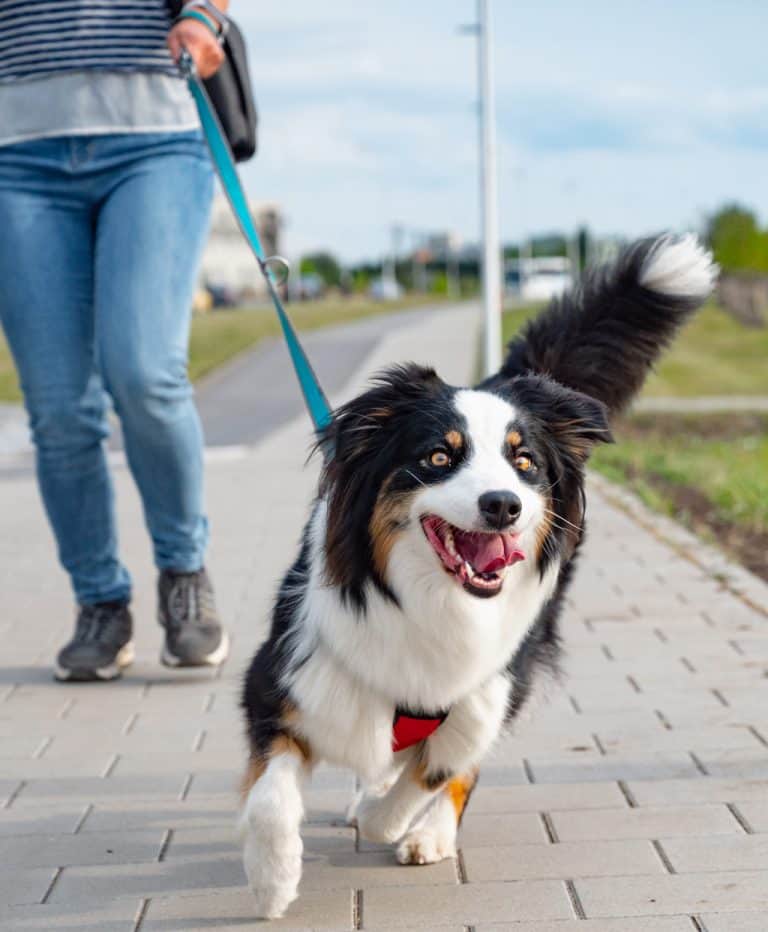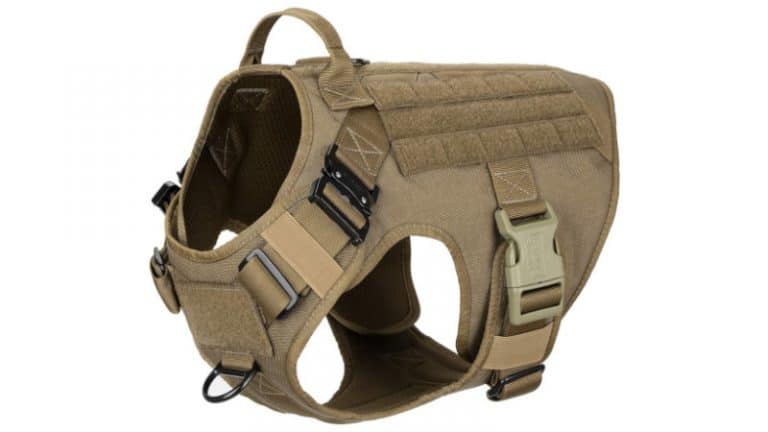Have you ever heard other dog owners talk about how their canines try to slip out of their harness?
Or have you experienced that yourself before?
I’m sure you can imagine how unsafe that is, especially if that happens in high-traffic areas.
And I suppose that’s the reason why you are here on this page, looking for something more secure so that you can have a stress-free dog walk.
Below are our top 5 picks for escape proof dog harnesses in 2023.
Read More:
- Why Use an Escape Proof Dog Harness?
- Why Do Dogs Want to Escape?
- How do Dogs Slip Out of Standard Harnesses?
- What to Look For When Buying an Escape Proof Dog Harness?
- Things You Need to Know About Escape Proof Dog Harnesses: From Measuring to Using it
- Best Inescapable Dog Harness Alternative
- No-Escape Dog Harness FAQ
1. Ruffwear Web Master Harness
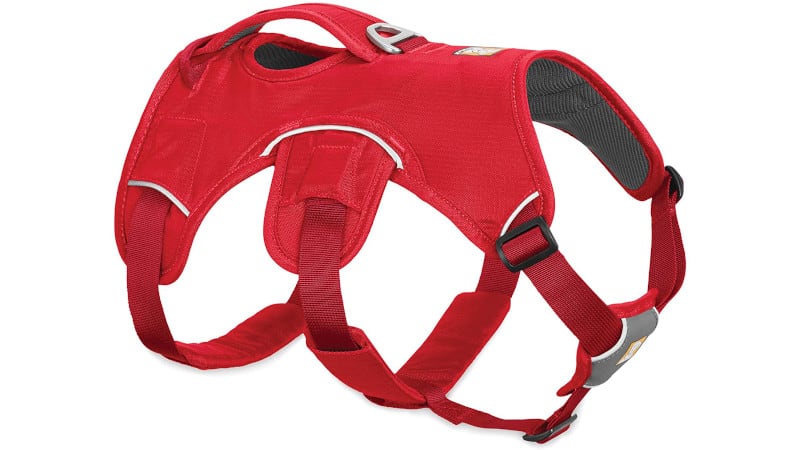
The Ruffwear Web Master Harness is one of the favorites among owners of escape-prone dogs and a top dog harness used for walking, running, and hiking.
It is lightweight yet durable, made of shell fabric with an anatomical design and a foam-padded construction to ensure your dog’s comfort, combined with three different straps that wrap around your fido’s chest and belly to prevent them from wriggling out of it. Plus, it has five adjustment points to allow for a snug fit and a sturdy handle on top for emergencies.
Additionally, this escape-free dog harness comes with two leash attachment points, an anodized aluminum V-ring on the back, as well as a webbing loop on the front to help keep your pup secure. Not to mention, it also has reflective trims and a light loop where you can attach a beacon light to help keep your furkid safe, especially in a dim light situation.
Features:
- Foam padded
- Five adjustment points
- Aluminum V-ring
- Reinforced webbing loop
- Reinforced handle
- Reflective trim
- Light loop
Pros
- It has an extra belly strap that makes it hard for dogs to slip out of it. In fact, most owners reported that their escape artists are unable to free themselves
- It is made of high-quality material and has extra padding that makes it comfortable for most dogs to put on
- It helps you make the most out of your money, which comes with a reinforced loop at the front of the harness that you can use to help reduce your dog’s pulling behavior, although it’s not the best option for that purpose
- It comes at a higher price point
2. ICEFANG Tactical Dog Harness
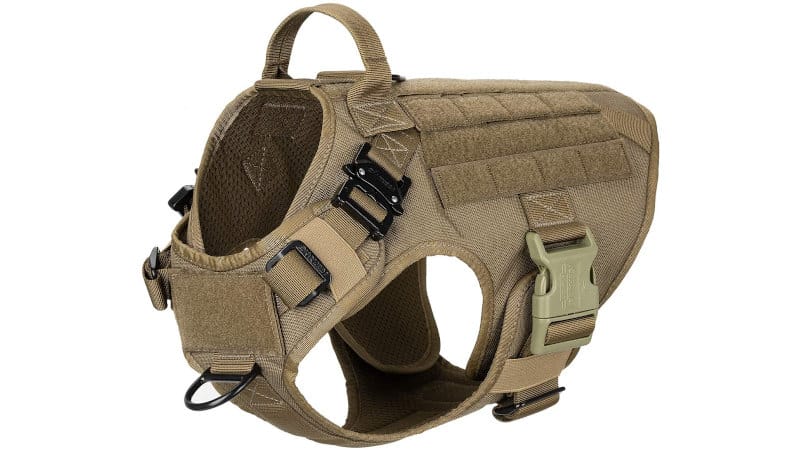
One glance at the ICEFANG Tactical Harness, you know it can stand up to rugged use. It is durable, made of 1050D nylon with a water-resistant coating, and has mesh lining on the inside for breathability and comfort. It offers two adjustment points on the shoulders and another two on the chest to ensure it can fit your dog snugly.
It also has two leash rings for securing your dog. The front ring is for controlling dogs who love to pull, while the back clip is for well-behaved dogs. Additionally, this anti-escape dog harness includes a sturdy top handle that allows you to lift your dog into the car, along with MOLLE (Modular Lightweight Load-carrying Equipment) strips on both sides to carry extra gear.
Other than that, it is equipped with two metal buckles on the shoulders, proven to be able to withstand a load of up to 1000 pounds, as well as two POM buckles on the belly that pass the 250 pounds proof-load test, making it sturdy and secure enough to handle most Houdini hounds!
Read More: ICEFANG Tactical Dog Harness Review
Features:
- 1050D nylon
- Mesh lining
- Two metal buckles (1000 lb Proof-Load Test)
- Two POM buckles (250 lb Proof-Load Test)
- Front and rear leash attachment points
- MOLLE (Modular Lightweight Load-carrying Equipment) System
- Four adjustment points
- Top handle
Pros
- It is equipped with proof-load tested buckles, making it extremely difficult for dogs to break free
- It is an excellent option for large, powerful dogs, and again, that’s thanks to its proof-load tested hardware
- You can also use it as a service dog harness, with a military-style design (MOLLE system) that allows you to attach various types of equipment or patches that your four-legged friend may need for work
- It may not be the best option for night walks as there’s no reflective material to help your pup stay visible, although it is also available in bright orange
3. Gooby Escape Free Easy Fit Harness
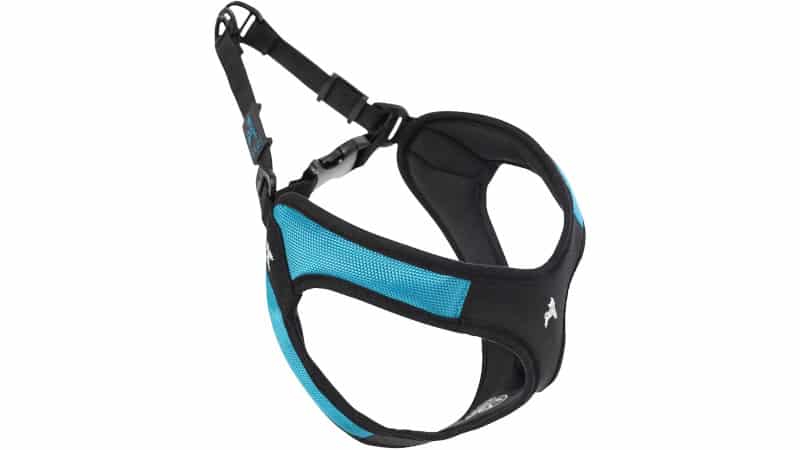
Have you got a small escape artist? If so, the Gooby Escape Free Easy Fit Harness may be what you are looking for, designed explicitly for escapers who weigh up to 35 pounds.
It is lightweight and has a patented escape-free design that will gently tighten the room around your dog’s body as they pull, creating no space for them to back out of it. Made of neoprene that contours to your furkid’s body shape, with compressed foam inside the shoulder area, finished with soft micro suede trimming around the edges to prevent chafing.
We also like that this no-escape dog harness has a step-in design, which makes putting it on and taking it off a breeze!
Features:
- Neoprene body
- Padded shoulder
- POM plastic D-rings
- Quick-release buckle
- Sizing adjustment tabs
Pros
- Comfortable for dogs to wear as it has an ergonomic design, plus the material used can provide insulation against the cold
- It leaves minimal space around the dog’s back when they pull, creating no gaps for them to escape through
- Easy to put on and take off
- Only suitable for small dogs weighing up to 35 pounds
- Some owners complained that the sizing adjustment rubber tabs could slide up, meaning you will need to adjust them constantly to ensure the harness won’t become loose
4. Mihachi Secure Dog Harness
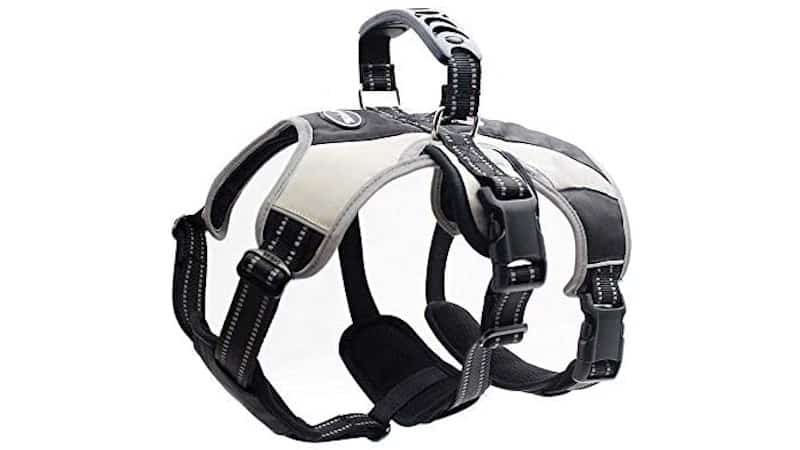
The Mihachi Secure Dog Harness is another option you can consider, with straps that encircle your canine’s chest, ribs, and stomach to keep them from escaping.
It is lightweight, made of polyester fabric with breathable mesh panels underneath, and has soft edges for your dog’s comfort. It also has foam padding in the belly area to prevent chafing and irritations, with five adjustment points to allow for a customized fit and ensure it won’t hinder your dog’s movement.
Additionally, this no-escape dog harness has a metal D-ring on the back for attaching the leash. Plus, it comes with a sturdy handle on top that gives you the ability to assist your dog over obstacles when you are out on a trail, along with reflective stitching so that you can easily see them in a low light situation.
Features:
- Polyester fabric
- Breathable mesh panels
- Five adjustment points
- Metal D-ring
- Built-in handle
- Reflective stitching
Pros
- It comes with a strap that goes around the ribs, making it harder for dogs to slip free
- All rings and buckles are made of metal, meaning it has the strength to handle the pulling force of most dogs
- The in-built plastic handle is sturdy enough to allow you to lift large dogs into SUVs or help them over obstacles
- No sizes available for small dogs, and it is also not ideal for dogs with short torsos
5. Didog Soft Flannel Padded Escape Proof Dog Vest Harness
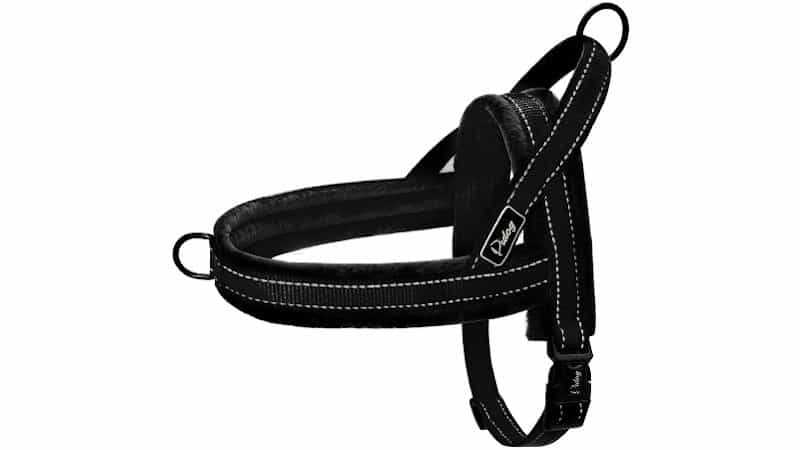
Are you on a budget? Check out the Didog Soft Flannel Padded Escape Proof Dog Vest Harness, which you can get for under $20!
It is lightweight yet durable, made of adjustable nylon straps with soft fleece pads beneath to ensure a comfortable fit. Equipped with a strategically placed welded O-ring on top that leaves very minimal space on your escape artist’s back so that they can’t back out of it.
Not only that, but this escape-proof harness also has a welded D-ring on the front that gives you the ability to discourage your dog from pulling, or you can also use it for hanging ID tags! What’s more, each strap comes with two stitched reflective lines to provide added nighttime visibility, ensuring your pup is safe while walking at night.
Features:
- Nylon straps
- Soft fleece inner lining
- Welded D-ring and O-ring
- Nylon buckle
- Reflective stitching
Pros
- Though it certainly is not the highest quality escape-proof harness out there, it is very affordable yet can prevent Houdini hounds from breaking free. Making it an excellent option for those wanting to keep their dog from escaping while trying to save a few bucks
- The material is too soft to handle big, powerful dogs who pull
Why Use an Escape Proof Dog Harness?
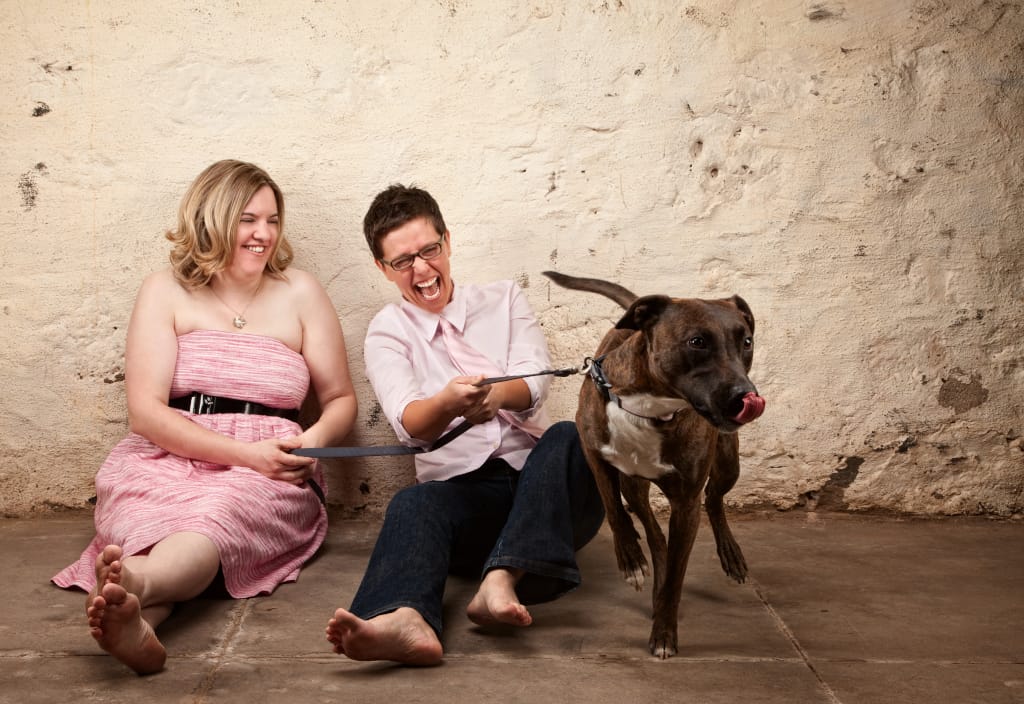
- To prevent neck injuries. Just imagine your dog wears a collar and tugs on the leash. Where do you think the force will apply to? The answer is the neck, meaning it can potentially choke and injure your fido’s trachea. And the beauty of a harness is that it can disperse the pressure over your dog’s body and chest instead of their neck.
- It offers better control over your dog. It gives you the ability to redirect your dog’s movement and subsequently move your canine away from things that possibly could trigger their prey drive, like squirrels, rabbits, and birds. Also, harnesses with a top handle offer you instant control over your dog, allowing you to secure them and prevent them from running into unsafe situations.
- To train your dog. Escape-free harnesses with a front leash attachment point allow you to provide your dog with no-pull training, which your pooch will learn that the leash pulling behavior is not acceptable.
- To reduce the risk of tangling. Dogs who often jump, twist, and fight their leash will not only potentially tangle themselves in the lead but also you. That’s especially true for large dogs as they have more strength to wrap the leash around your legs, arms, wrists, and fingers! Using no-escape harnesses can dramatically reduce the chances of that happening.
- To prevent your Houdini dog from escaping. Well, that’s what this whole article is all about. These escape-resistant harnesses either have a strategically placed leash attachment, an additional belly strap, or are made with extremely durable hardware like the one from ICEFANG to keep your escape artist from wriggling out.
Why Do Dogs Want to Escape ?
- Poor quality dog harness. One of the most common reasons why canines escape from their harness is that the harness is made of cheap, flimsy material, which would rub against their skin. Just put yourself in their shoes. Would you try to get rid of the things that make you feel uncomfortable? And obviously, you would! So, it makes perfect sense that dogs want to escape because the harness is hurting them.
- Nervous. Some dogs will make an effort to slip free simply because they are nervous and afraid, especially when encountering unfamiliar surroundings and conditions. For instance, if your dog never gets accustomed to putting on a harness before, forcing them to wear one is very likely to result in them trying to escape.
- Leash aversion. Also, some canines are very much against being attached to a leash because their movement is restricted. They will get upset, scared, frustrated, and you will find them start pulling and twisting to find their way out of the tie that binds. But once you have trained, desensitized, and positively taught them that walking on a leash is a good thing, they won’t try to get out of their harness.
- Strong prey drive. Chasing and darting off to squirrels is fun for dogs, especially for those who have a high prey drive like Huskies and Greyhounds. Their strong urge to go after other animals will lead them to try to slip out of their harness at the best of their abilities, which also means canines with strong prey drive often make great escapers!
How do Dogs Slip Out of Standard Harnesses?
We all know that dogs are super smart, which is why we love them so much. And if you are curious about the method they use to secure their freedom, read on!
- Chew!
The most logical way of how they manage to do it is, of course, by biting through the straps. And it makes complete sense as you know their jaws are so powerful. That is also why many pet parents are interested in harnesses that are more resistant to chewing.
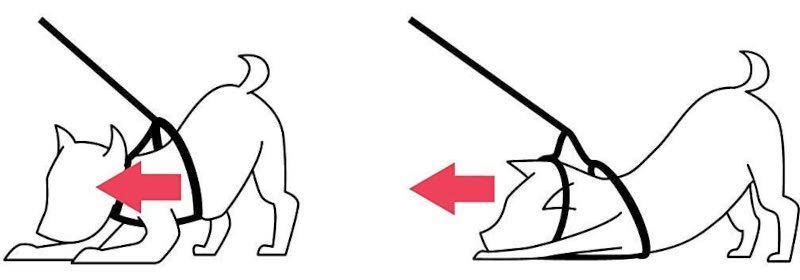
- The Back Out Method.
Dogs are not only intelligent but also very flexible. What they will do is they will pull themselves towards the back against the leash. Then, slip their head and hands through the gap, and free themselves from the harness.
What to Look For When Buying an Escape Proof Dog Harness?
When it comes to picking an escape-proof harness, there are a few features you need to consider. Here are some of them.
1. Size
Picking the right size is perhaps the most important thing. Whether the harness is too loose or too tight, it will make it uncomfortable for your dog. Let’s put that aside, and let me ask you a question, do you think a loose harness is escape-proof? I guess the answer is pretty clear here. So, make sure you pick the one that can fit your dog well.
2. Is the Front-Clip Harness or the Back-Clip Harness Better?
It will be depending on how your dog behaves on the leash and what you are trying to achieve. The purpose of the front clip is to discourage the leash pulling behavior and allows you to redirect your dog, meaning it is suitable for dogs who pull. And that’s why you see many manufacturers often advertise harnesses with a front clip as no-pull dog harnesses.
However, if your furry friend can walk nicely on the leash, then using the back clip may be better. The reason is that it offers dogs more room to move around and is less restrictive, hence more comfortable for them to walk.
The good news is that you don’t have to pick either one or another. Many dog harnesses on the market today include both clips like the Ruffwear Web Master, ICEFANG Tactical Harness, and Didog Harness.
3. Material
As mentioned earlier, your dog can escape by chewing through the straps. So, you will need to either get a ‘chew-proof’ harness that is more likely to be able to stand up to your dog’s teeth or those with multiple and broader straps to secure them, such as the Ruffwear Web Master, ICEFANG Tactical Harness, and Mihachi Secure Harness. As you could imagine, dogs can easily chew up harnesses with thin straps.
Otherwise, you can also choose the ones with a strategically placed back clip, like the escape-free harnesses from Gooby and Didog. So that when your pup tries to pull themselves backward, it won’t create the space that enables them to slip their elbows and body through.
4. Padding
It’s also a good idea to opt for padded harnesses, especially if your dog is a puller, as when your four-legged friend tugs, they will create lots of friction, particularly in the chest and the neck area. In other words, harnesses without padding may rub and dig into your canine’s skin and cause irritation when your pup pulls.
5. Visibility
Many pet parents often overlook this feature, yet it is equally important. The reason is that harnesses with reflective stitching can provide added visibility, especially at night. And as a result, other people can easily see your dog, which also means they are safer.
6. Handle
You may want to consider harnesses with a built-in handle on top as it provides you with better control over your dog. Not to mention, it can also come in handy if you need to assist your dog in and out of the car or to help them over obstacles when you go on a hike with them.
Things You Need to Know About Escape Proof Dog Harnesses: From Measuring to Using it
- Sizes are not standardized. So, make sure you check the manufacturer’s sizing chart and measure your dog each time before you purchase. And remember, harnesses that are too loose are not escape-proof!
- Only put on the harness when your dog is standing. Keep in mind that dogs’ chest circumference is larger while sitting. Therefore, it is crucial to tighten the harness only when they stand up. Otherwise, your dog will have enough room to break out.
- Check if it fits. Always double-check to make sure you have already tightened everything before stepping outside. That said, if it is too tight, it can cause discomfort. So, ensure you can at least fit in two fingers between your dog’s body and the harness.
- Test run. If your dog is new to wearing a harness, then you should get them to put it on and walk around in the house or the yard first. The intention here is to get them used to it and to make sure the harness functions correctly.
Best Inescapable Dog Harness Alternative
PetSafe Martingale Dog Collar
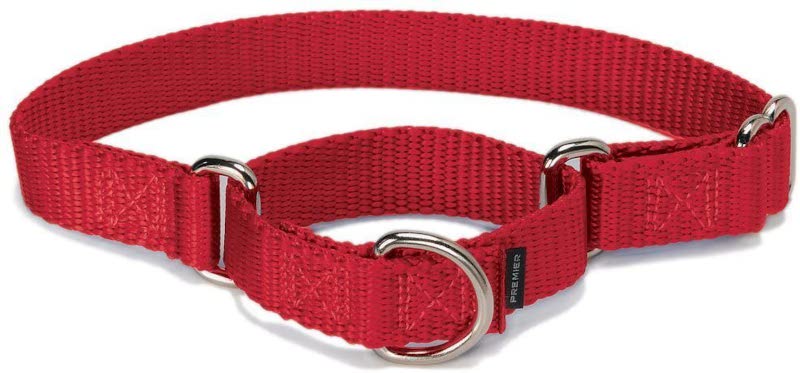
Prefer not to use an escape-proof dog harness? Sure, check out the PetSafe Martingale Dog Collar instead!
It is durable, made of high-quality nylon, with an additional loop that will tighten around your furkid’s neck to a certain degree when they pull, ultimately serving as a deterrent to prevent them from backing out.
This escape-resistant collar is somewhat similar to choke chains or prong collars but is a lot safer for dogs.
Features:
- Martingale loop
- High-quality nylon
- Metal D-ring
Pros
- Very affordable yet able to keep dogs from escaping
- It is lightweight and durable
- Most owners noted that it worked well for their pooches
- Recommended by vets and dog trainers
- It puts pressure around a dog’s neck, which makes it less ideal compared to harnesses
No-Escape Dog Harness FAQ
Will the anti-escape harness that tightens hurt my dog?
Can I get my escaper to wear both the harness and the collar to make it more secure?
Yes, you can. But you will have to connect the harness to the collar with a zip tie or a durable carabiner. That way, if somehow that your escape artist manages to back out of their harness, they will still be attached to the collar.
Recommended Reads:

